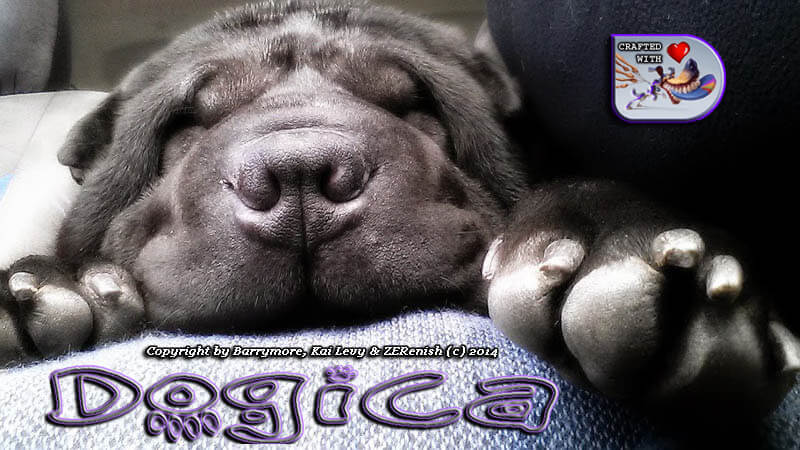

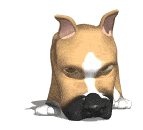

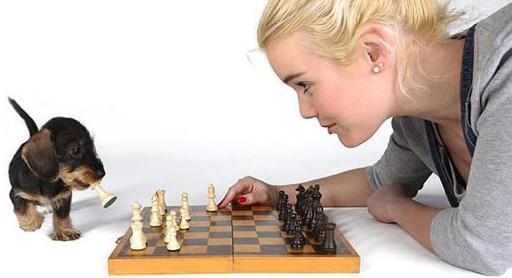
Dog Intelligence & IQ
|
| Rank | Breed |
|---|---|
| 1 | Border Collie |
| 2 | Poodle |
| 3 | German Shepherd |
| 4 | Golden Retriever |
| 5 | Doberman Pinscher |
| 6 | Shetland Sheepdog |
| 7 | Labrador Retriever |
| 8 | Papillon |
| 9 | Rottweiler |
| 10 | Australian Cattle Dog |

Ranks 11 to 26
Excellent Working Dogs
Understanding of New Commands:
5 to 15 repetitions.
Obey First Command:
85% of the time or better.

Ranks 27 to 39
Above Average Working Dogs
Understanding of New Commands:
15 to 25 repetitions.
Obey First Command:
70% of the time or better.

Ranks 40 to 54
Average Working/Obedience Intelligence
Understanding of New Commands:
25 to 40 repetitions.
Obey First Command:
50% of the time or better.

Ranks 55 to 69
Fair Working
Obedience Intelligence
Understanding of
New Commands:
40 to 80 repetitions.
Obey First Command:
30% of the time or better.
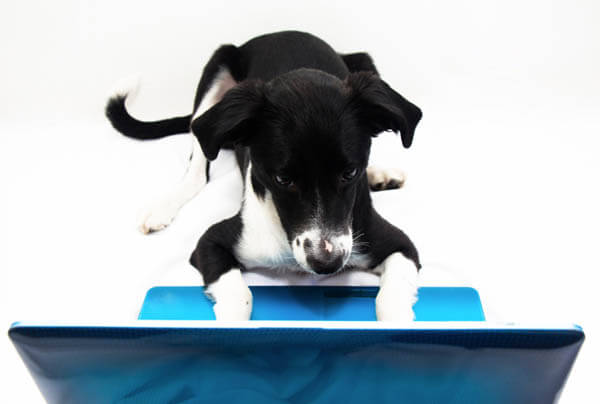
Ranks 70 to 79
Lowest Degree of Working
Obedience Intelligence
Understanding of
New Commands:
80 to 100 repetitions.
Obey First Command:
25% of the time or better.
| Rank | Breed |
|---|---|
| 70 | Shih Tzu |
| 71 | Basset Hound |
| 72 | Mastiff Beagle |
| 73 | Pekingese |
| 74 | Bloodhound |
| 75 | Borzoi |
| 76 | Chow Chow |
| 77 | Bulldog |
| 78 | Basenji |
| 79 | Afghan Hound |
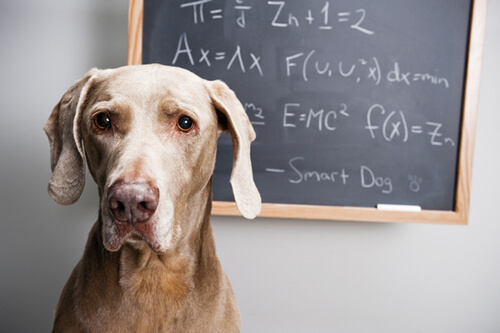
Why scientists believe dogs are smarter than we give them credit for?
WATCH VIDEO
Dog lovers have been saying it for years: dogs are smarter than many people give them credit for. Now, scientists are joining in. Over the past decade, research into canine behavior and intelligence has been blossoming, and a range of experiments have suggested that dogs are capable of surprisingly complex feats of social intelligence and emotional sensitivity. On the whole, psychologist and dog researcher Stanley Coren estimates, the average dog's intelligence is roughly as sophisticated as a 2.5-year-old baby's.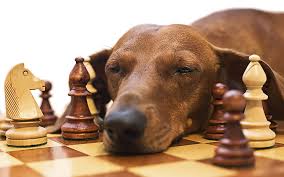
So far, research has suggested that dogs can read our cues, show emotional connection to their owners, and even display jealousy. Studies have found that the brightest dogs appear to be capable of learning hundreds of words. It's likely that these abilities have been shaped by evolution, over thousands of years, we've selected those dogs best adapted to live with humans. The field is still new, however, and researchers keep finding out a surprising amount. "Most labs have historically been invested in rodent and monkey models," says Gregory Berns, an Emory neuroscientist who conducts MRI research with dogs. "But dogs are unique animals, and I think in many ways they're one of the best animals for understanding social behaviors." Using newer technologies such as MRI as well as carefully designed behavioral experiments, a handful of labs around the world have dug into the dog psyche and found that they are much smarter than many people assume.
1) Dogs are adept at reading people often better than chimps
Chimpanzees and human infants younger than a year or so usually fail a very simple test of implicit communication: a person sets two cups upside down on the ground and points at the one with a treat hidden underneath. It sounds absurdly simple, but both chimps and babies are unable to interpret this as a cue to find the food, and they investigate the correct cup first only about half the time. Dogs are different. A series of experiments conducted by Brian Hare of Duke University found that dogs do interpret this cue, going for the correct cup at rates far higher than chance. This was true even when both cups were scented to smell like the treat. Dogs seemed capable of interpreting human stares and nods toward the right cup.
In other experiments, dogs that are trained not to take a piece of food do so much more often when an observing human has left the room, closed his or her eyes, or turned away. Again, it sounds very easy, but understanding the significance of a gaze in this way is something chimps do not seem to be capable of. Still other studies show that dogs can pick up on our judgments of objects and act accordingly. In one, for instance, dogs observed their owners open two boxes but couldn't themselves see what was inside. The owner acted positively about the contents of one box - smiling, speaking in positive tones, and leaning toward it) and negatively for the other: recoiling in shock and speaking in angry tones. The dogs went to the former box 81% of the time, a finding that's similar to the results of the same experiment conducted with 18-month-old babies.
2) Dogs can learn hundreds of words
Dogs vary in their ability to remember things: just like humans and members of all animal species. But some dogs with particularly good memories, scientists have found, can be trained to remember more than 1,000 different words. The most famous case is a border collie named Chaser, who has been trained by a retired psychology professor named John Pilley. As documented in a 2011 study in Behavioral Processes, Chaser has learned the names of 1,022 different toys, when directed to pick a specific toy up, she retrieves the correct one about 95 percent of the time. More recently, Pilley has trained Chaser to recognize verbs, as well: she now knows the difference between picking up something, putting her paw on it, and putting her nose on it.
Chaser's abilities might be unusual, but she's not unique. Another border collie named Rico has been shown to recognize more than 200 different words, and is capable of a cognitive process called "fast-mapping", when he hears a new word, he knows to go get a new toy, rather than one he's already learned the word for.
3) Dogs pay attention to the words of our speech, not just our tone
Many people assume their dogs can only process the tone of their speech, but experiments by Victoria Ratcliffe, a psychology researcher at the University of Sussex, suggest their brains are processing the actual words, as well. In human brains, the left hemisphere primarily processes language, and the right hemisphere primarily processes emotion and tone. Sound that enters our right ear is directed to the left hemisphere and vice versa. So for most people, we disproportionately interpret language using sound from our right ear and interpret tone with the left.
Ratcliffe showed that dogs have the same bias. "We had speakers on either side of the dog and played a noise from both at the same time," she says. When they played commands the dogs were familiar with, the dogs disproportionately turned to the right, and when they played distorted speech, or commands in a language the dogs had never heard before, they mostly turned to the left.
"This told us that they're paying attention to different calls, and processing words they already know in a different way than others," she says. In ongoing work, she's looking at exactly what information dogs associate with words they've learned. Some fMRI work, which involves training dogs to lie still for up to 30 seconds in scanners, which track blood flow to different areas of the brain as a proxy for brain activity has confirmed these findings. Experiments at Hungary's Eotvos Lorand University have shown that when dogs hear human voices, there's a specific area of their brain that shows significantly more activation than when they hear nonverbal noises. "The very exciting finding is that in both the human brain and the dog brain, these 'voice areas' are located in very similar places," lead author Attila Andics told me for a previous Smithsonian article on the findings.
4) Dogs are emotionally connected to their owners
Some of the most fascinating canine MRI work has come from Berns's lab at Emory. In one of his most striking experiments, Berns found that when dogs sniffed a rag soaked in their owner's scent, activity spiked in their caudate nucleus, a reward center involved in emotional attachment. But it didn't spike when a stranger's scent was used instead. He also found that the same spike occurs when a dog's owner walks into the room, but not when strangers do. In more recent experiments, Berns has put dogs in an fMRI and had various people show them a signal that means they're about to get a treat.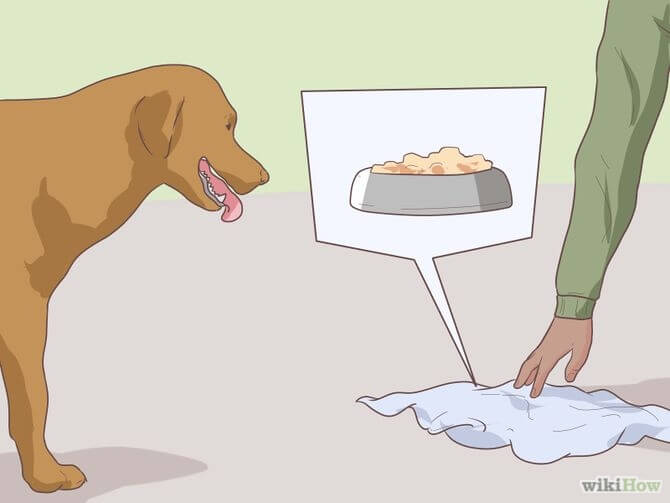
"Dogs that scored lower on tests of aggressiveness had a caudate response that was really tuned just to their owner," he says. More aggressive dogs, on the other hand, showed equal spikes in the reward system when any human gave the signal. His lab is now working with service dog organizations to see if this sort of test could be used to see which dogs are most suitable for service.
5) Dogs can feel jealousy
Traditionally, the emotion of jealousy was thought to occur only in primates. But a few different recent studies have provided evidence that dogs feel it, too. In one experiment, researchers from the University of Vienna first trained dogs to present their paw ("shake hands") in exchange for a treat. They then conducted the experiment with pairs of dogs, arbitrarily rewarding only one, and found that the other dog stopped participating. This wasn't just frustration at not getting a treat: when the same dogs participated in the experiment alone, and didn't have the chance to see another dog getting rewarded, they participated for a much longer period of time without rewards.
In another study, meanwhile, psychology researcher Christine Harris confirmed what many dog owners have long suspected: the animals also get jealous over attention given to other dogs. In the experiment, she had owners ignore their dogs, giving attention to either a pop-up book or a robotic stuffed dog toy that could bark and wag its tail. When researchers blindly analyzed video of the experiment later, they found the dogs exhibited significantly more jealous behaviors, such as growling, snapping, and rubbing up against the owner, when the object was the stuffed dog, rather than the book. This result was the same in similar experiments conducted to measure responses of six-month-old babies.
Still, there are limits to dogs' intelligence!
Many of these abilities likely stem from dogs' evolutionary history. Their ancestors, after all, were the wolves who were quickest to adapt to living around humans, and for tens of thousands of years since, they've been specifically bred for their ability to be trained by us. It's logical that this selective pressure would lead to animals that are especially attuned to human voices and emotions.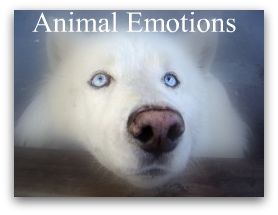
But some scientists feel that dogs' acute sensitivity to humans might actually lead us to overplay their intelligence. They're remarkably attuned to our actions, but they certainly don't always grasp the meaning behind them. As canine cognition researcher Clive D. L. Wynne told the New York Times, "It's a happy accident that doggie thinking and human thinking overlap enough that we can have these relationships with dogs, but we shouldn't kid ourselves that dogs are viewing the world the way we do."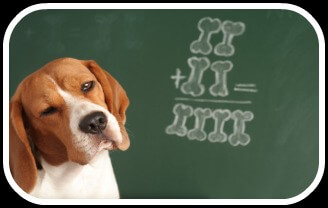
One good example of this and of many dog owners' tendency to overestimate the animals' understanding of the world, is a series of experiments conducted at Barnard's Horowitz Dog Cognition Lab that studied what's commonly called the "guilty look.". Dog owners often report that they can tell from their dog's impression, upon arriving home, if the dog misbehaved while left alone. But the researchers, led by Julie Hecht, left dogs alone in a room with food that they'd been trained not to eat, then filmed and rigorously analyzed their interactions with their owners who didn't know whether they'd misbehaved or not, when they returned.
It turned out that for the most part, the misbehaving dogs didn't really act any guiltier then the others: dogs from both groups basically just responded to getting chastised by their owners by showing characteristically "guilty" looks. Dogs love humans, are good at reading us, and are eager to please us. But that doesn't mean they know right from wrong. Instead, they simply feel sad when they let us down.
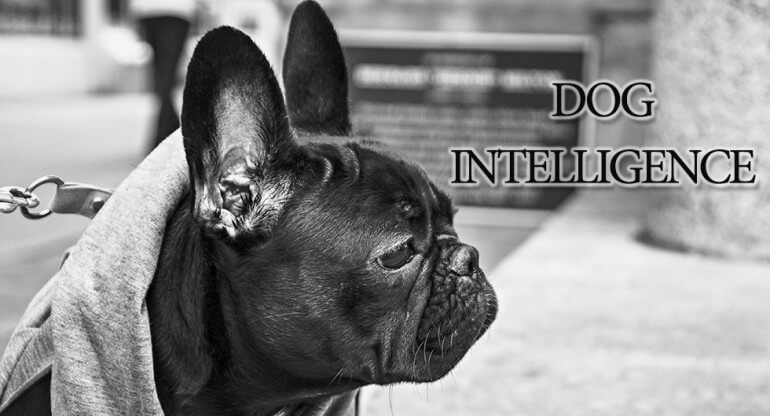
Dog intelligence is the ability of a dog to learn, think, and solve problems. Intelligence is a complex subject. A breed of dog that does not learn very quickly may have other talents. Dog owners love to discuss how intelligent their canine family members are. We all have amazing stories about how inventive our beloved pets are. There is no doubt that dogs are intelligent but how is canine intelligence studied and measured? There are quite a few tests that help us determine how intelligent our canine companions are and I will cover a few of them. Don't get discouraged if you suspect that your dog will fail the intelligence tests discussed here. We love our pooches even when they are not the sharpest tools in the shed. Various methods that are used to examine dog intelligence all produce similar results that allow us to conclude that even the average dog shows the signs of intelligence of a 2-year-old child. So what exactly is being measured to determine if your pooch is indeed smart?
Basic emotions
Just like young children, dogs possess certain basic emotions. They feel happiness, anger, fear, aversion, etc. You may ask about empathy. As a dog owner you want to believe that you are more than a meal ticket for your dog. For example, Deborah Custance and Jennifer Mayer, researchers from Goldsmiths College in London, decided to determine if dogs can feel empathy. They gathered a focus group of 18 male and female dogs and asked their owners to talk, hum and cry. 15 out the 18 dogs approached the crying person even in situations when this person was not their owner. Does it mean that dogs want to cheer up a crying person? Is it possible that dogs were just surprised when they observed crying, an infrequent human reaction, and were simply curious? Perhaps the sound was so strange that they simply wanted to be comforted by a human? This research produced more questions than answers.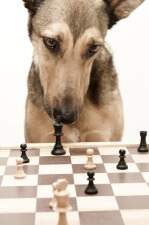
Many trainers insist that dogs do not feel complex emotions, and dismiss what we call emotions as mere personification. Do you think your dog has a guilty look when he did something bad? Most likely you already tried to reason with your dog explaining that something is off limits to him and he simply recognizes your facial expression and the tone of your voice. Most likely your dog fears that you will punish him. Dogs do not feel guilt, they simply are scared of the unpredictable and frightening reaction of their owners. They can't connect something bad they did long time ago with your reaction.
Dogs also understand whether they receive fair treatment. If only two dogs out of three are presented with treats, the unrewarded dog soon notices the different treatment and stops performing tricks. This dog can even stop paying attention to a trainer and isolate himself from the other dogs. However, if dogs receive different types of treats they can't distinguish the subtleties in the quality of treats they get. They all continue to perform unless a certain treat is absolutely unacceptable.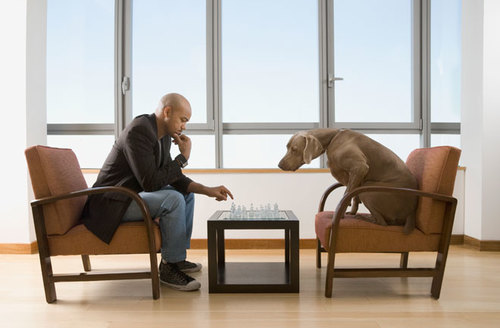
Observing simple emotions like happiness, anger, fear and aversion, we can see the clear-cut results that some dogs are more expressive with their basic emotions than the other. Researchers who study dog behavior came to the conclusion that dogs possess all of the same brain structures that a human possess when they are emotional. For example, they have the same hormones, such as oxytocin and have similar chemical changes, yet we can't assume that dogs' emotional ranges are similar to humans' emotional ranges or that dogs have all the emotions that humans have.
Spatial awareness and simple motor skills
Dogs can find treats and learn how to navigate in the environment as fast as possible to get to the treats they want. They can also learn to operate simple machines if they are rewarded for doing it. Check this video to see how well a dog could ride a bicycle.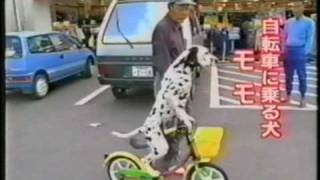
WATCH VIDEO
A dogs' ability to remember words
Dogs are capable of understanding an impressive number or words. There is a basic vocabulary that every trained dog knows, such as sit, stay, stop, no, etc. However, according to Dr. Coren, an expert in canine intelligence, on average a dog can understand 165 words, and if dog is trained his vocabulary can be enlarged dramatically. Check out this amazing video to see how many words a dog can understand.
WATCH VIDEO
For dogs it is easier to understand words that they can link to objects such as treats or toys and behaviors, such as walk, stay, bring, etc., but not the abstract concepts. Also, when you select words that you want your dog to understand, it is better to choose words with hard sounds, such as R, rather than soft consonants, such as F. It is also obvious that dogs learn quicker short and simple words over long words or phrases.
Math skills
One of the tests that are used to check dog intelligence is a math test. Scientists that study dog intelligence discovered that a regular test used to measure math skills of toddlers, if modified, could be used for dogs. For example, dogs can see how one treat is being placed behind the screen and later another one is added to it. If they get the math right, the screen is lifted and they can get their treats. If a researcher takes away one of the treats and replaces it with a different treat or adds two treats instead of one and provides the wrong message, like 1+1=1, the dogs get confused and surprised. They stare at screen longer before they choose how to answer. Such studies proved that dogs are able to grasp basic concepts of math. They can count to five. Watch this amazing video that shows how well a dog can count. Certainly it is an extraordinary dog, but is he really that smart?
WATCH VIDEO
The skills that the dog exhibited in the video above are really something inexplicable. It is hard to believe that it is possible. Is there anything else helping this dog to count so well? Watch the other video with the same dog, in which his math skills testing is taken to a different level. This video suggests that perhaps dogs can't count so well, but they definitely are able to trace the slightest changes in the body language or facial expressions of their owners.
WATCH VIDEO
So your pooch is smart and he can get even smarter if you devote some time to training. Dogs are just like children, the more time you spend with them playing and teaching them new things, the quicker they learn. Do you want a smart dog, don't be a lazy dog owner! Put a collar on your dog, take him outside for a walk and teach him something new.
But can they talk?
New research shows that all barks are not equal. Dogs use different barks and growls to communicate different messages, researchers say. And what's more, other dogs can understand differences among barks and identify other dogs by their "voices."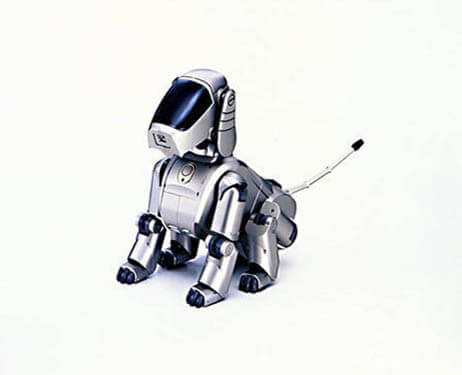
Who's a naughty boy?
An experiment by University of Vienna researchers was designed to find out when dogs are most likely to disobey. Pooches were told to lie down and a bowl of their favorite food was placed about five feet in front of them. Not surprisingly, they were most likely to go for the food when their owners left the room or turned their backs. But when the owners were facing them, they could tell whether they were watching TV or reading a book or paying attention to them!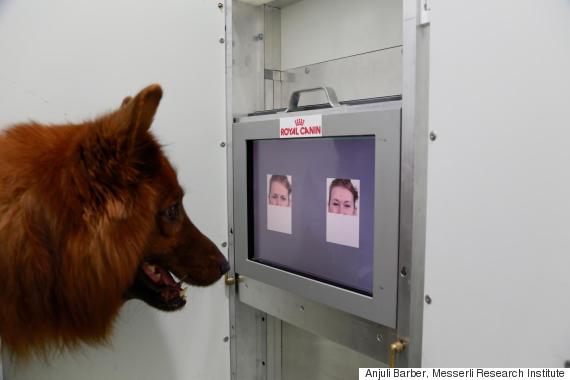
Dogs can recognize our face expression
Fluffy really does know what that big grin or frustrated frown on your face means. At least, that's according to a new study that suggests dogs can tell from a facial expression whether a person is happy or angry. Scientists are calling the research, which was published in the journal Current Biology on Feb. 12, 2015. The first solid evidence that humans aren't the only ones who can recognize emotional expressions in another species. "Our study demonstrates that dogs can distinguish angry and happy expressions in humans, they can tell that these two expressions have different meanings, and they can do this not only for people they know well, but even for faces they have never seen before," study co-author Dr. Ludwig Huber, head of the University of Veterinary Medicine, Vienna's Messerli Research Institute in Austria, said in a written statement.
READ MORE ABOUT
HUMAN-FACE EXPRESSION RECOGNITION BY DOGS
at WWW.HUFFINGTONPOST.COM

Abstract
This science fair project was conducted to compare the intelligence levels of female and male dogs. The science project experiment was done using 3 different types of tests on dogs.
Hypothesis
Female dogs are more intelligent than male dogs.
Dogs and intelligence
The intelligence level of a dog is subjective. As a species, dogs have certain strengths that other animals do not have. These strengths vary according to the breed, personality and gender of dogs. A particular dog may not be good at learning a certain task because it may not have a flair for that task. However, if a dog has a natural acumen for a particular task, it will pick it up quickly.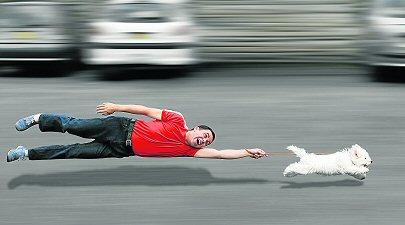
Certain breeds of dogs, such as the Labrador, are well known for being skilled at hunting. Similarly, German Shepherd's are known to be good security dogs. Every breed has its own area of specialty. Gender also plays a part in a dog's behavior and temperament. Female dogs calm down more easily than male dogs. Also, they show less aggression should they sense that they face no immediate threat. Female dogs are more territorial and obedient. Male dogs, on the other hand, tend to roam around and are more easily distracted.
Conclusion
The hypothesis holds true: female dogs are more intelligent than male dogs. Dogs are often called "man's best friend". They are very intelligent and help us to perform many tasks. Dogs have helped us hunt for hundreds of years. Farm dogs help farmers round up sheep or cattle. Security dogs help guards to perform their duties. Equipped with aa sharp sense of smell, dogs help to sniff out drugs and contraband items. They are often used at customs checkpoints, to fight the battle against smugglers as well as terrorists. Dogs are also trained as guides for the blind. 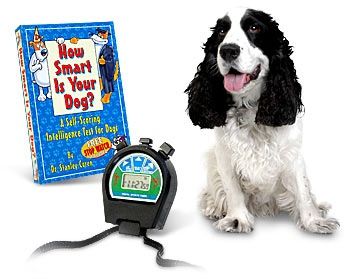
READ MORE ABOUT
DOG MALE & FEMALE GENDER DIFFERENCES
at WWW.INDIAKENNELS.COM

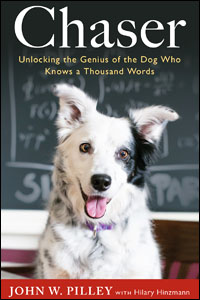

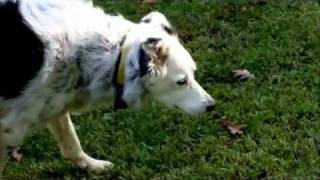
WATCH VIDEO
A well-known psychologist in the field of canine behavior Stanley Koren (neuropsychologist and professor of psychology at the University Translated British Columbia) classified the most popular and famous dogs based on the opinion of a large number of judges, trainers and dog lovers in seven categories:
1. intelligent dogs
2. reliable dogs
3. routinely dogs
4. confident dogs
5. independent dogs
6. dog protectors
7. kind dogs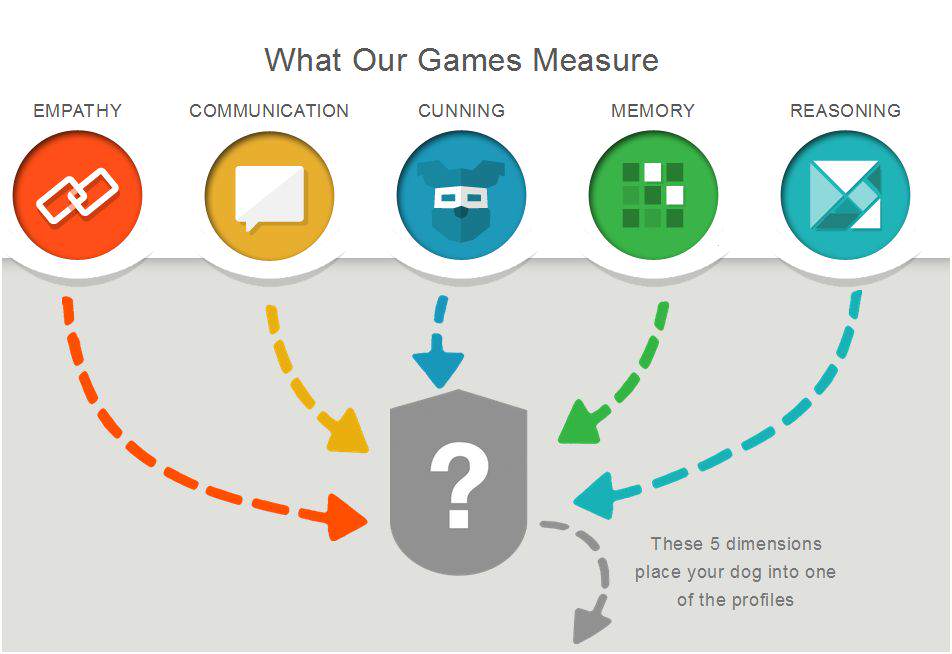
DOGNITION DOG INTELLIGENCE TYPES
CHARMER:
Charmers have exceptional social skills, meaning they can read human body language like a book. Seeing as these social skills are paired with just the right amount of independent problem solving skills, it's no surprise that Charmers can be mischievous.
ACE:
"Aces" are problem-solvers, socially elite, bond well and are good at almost everything. They also try to get away with bad behaviour and then rely on a sweet face or some nuzzling to get themselves out of a pickle.
EINSTEIN:
'Einsteins' are the brainiacs. They can solve new problems by looking at the facts in front of them, a key attribute of a genius. However, like brilliant people, Einstein dogs can be socially awkward.
PROTODOG:
A Protodog is a spontaneous pooch that bonds easily and can solve problems on its own or with people. Protodogs are akin to the first dogs; flexible when it comes to solving problems on their own, but with sufficient social acumen to turn to humans for help when needed.
SOCIALITE:
Although they rely less on independent problem solving skills than other dogs, don't jump to any conclusions about the Socalite's intelligence. They rely on a very specific strategy, using the humans in their pack to get what they want.
RENAISSANCE DOG:
Renaissance Dogs are the canine embodiment of reliability. Rather than being completely dependent on individual cognitive strategies, Renaissance Dogs show impressive flexibility across all 5 cognitive dimensions.
STARGAZER:
Stargazers, usually considered to be aloof by their owners, have their own often misunderstood type of genius. Generally their cognition is geared towards self-reliant and present-minded strategies, rather than being overly concerned with past events and human collaboration. They have a wild, wolf-like side which can be a great compliment to the lifestyle of a rugged individual.
MAVERICK:
With cognitive characteristics closer to their wolf ancestors than most other dogs, Mavericks are relatively unique in the dog world. These dogs definitely prefer to tackle problems independently
EXPERT:
Dogs with the Expert profile have all of the cognitive tools they need to solve most of their daily problems on their own. They have a relatively strong memory along with the ability to solve many types of problems they've never seen before. Due to these cognitive abilities, Experts tend to be less reliant on humans than other dogs. 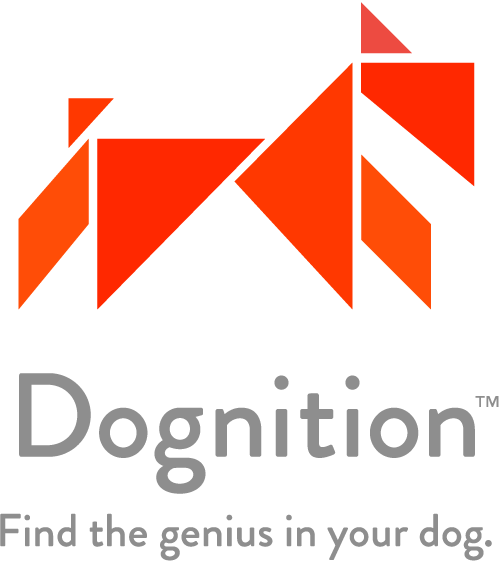
WANT TO KNOW WHICH TYPE
YOUR DOG IS?
Visit WWW.DOGNITION.COM

In particular, we are looking at animal cognition, the way they think. You'll discover whether your pet is right- or left-handed, how good it is at solving problems, and much more. The tests are quick and easy to do. Most of them take less than 5 minutes. Each test has clear instructions that walk you through the procedure and tell you how to judge your pet's performance.
DOG INTELLIGENCE ONLINE TESTS
Paw Preference Test
Summary: Left-handedness in humans is often associated with creativity and a natural musical ability. If your dog appears to be left-handed, maybe your dog has hidden talents as well. Right-handedness in humans is often associated with language ability and a logical mind. There is some evidence that right-handed animals can be better at remembering and using words, so if your dog appears to be right-handed, maybe your dog understands more of your conversation than you had thought!
Here's another Paw Preference Test for dogs.
Flip The Tin Test
Summary: If your dog understands what psychologists call "object permanence", it realizes that objects continue to exist even after they have disappeared from view. To understand this, it must believe in a world beyond its perception.
Drop The Treat Test
Summary: This test determines the degree to which your dog understands the way that horizontal objects relate to each other. Pets that move about more in 3 dimensions should do better at this than those that move only on the ground.
Round The Bend Test
Summary: To do this successfully, your dog must have a good understanding of its physical world, and be prepared to walk away from a treat in order to get at it.
Command Of Language Test
Summary: When a dog learns a new command, it is associating the sound or body signals that you create with one of its own actions. Your dog's learning and memory has probably got a lot to do with your own training habits as an owner. Your dog's learning and memory has a lot to do with your own training habits as an owner. Your dog may be able to learn more commands with the right encouragement.
Pull The String Test
Summary: A dog carrying out the physical action of pulling the string is pretty impressive because pulling a string may be an entirely novel thing for your dog to do.
Hide And Seek Test
Summary: A dog uses 2 types of memory to perform this task: spatial memory to remember the layout of the space, and episodic memory to remember the action of you placing the treat in the hiding place.
THE TELEGRAPH DOG INTELLIGENCE TEST
DOGNITION ONLINE DOG IQ TEST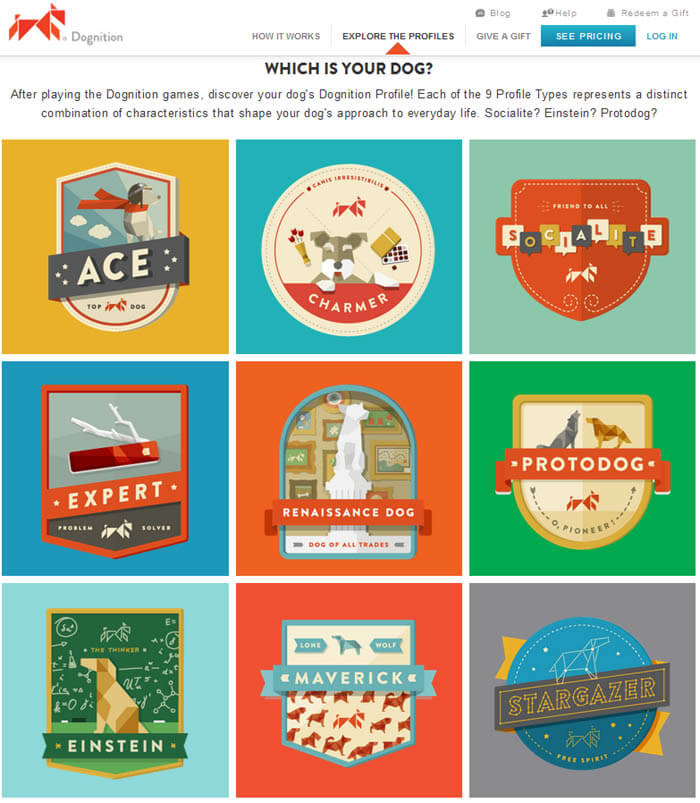
FACE RECOGNITION DOG IQ TEST
This is an interesting technique on one aspect of dog intelligence and is a great way of strengthening the bond between an owner and his dog. This is especially useful if your dog or dogs are new additions to the household and are still in the early learning phases. Pick a time of day where your dog is relaxed, responsive and free from distractions. Sit face to face with your dog, about a meter or two apart. Make sure that your dog's focus is entirely on you. Take a few deep breaths while staring straight into your dog's eyes. After a few seconds smile broadly for a few moments. If your dog comes bounding towards you with their tail wagging, then this means they understand what your expression means and is responding to it.
ONLINE DOG IQ / INTELLIGENCE TEST
by WWW.WIKIHOW.COM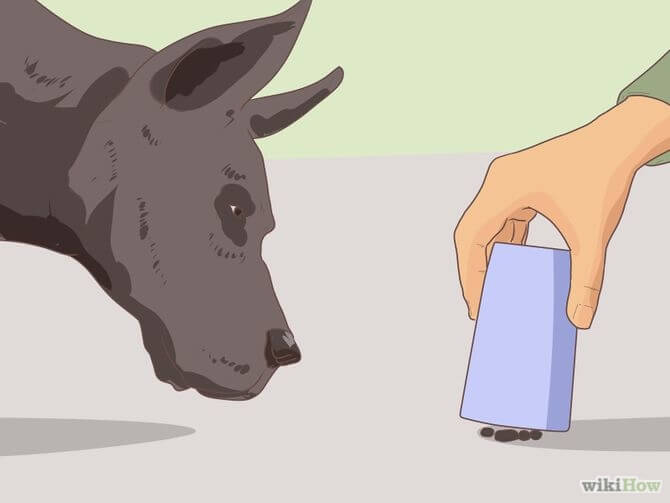

DOG INTELLIGENCE TYPE TEST
By WWW.PLAYBUZZ.COM
3 Cups Test
Line up three cups in front of the dog and allow it to see you placing a treat under one of the cups. Bring your dog out of the room and return after 30 seconds.
A. Get the right cup with treat under it the first time.
B. Get it right the second time.
C. What cup??
The Leash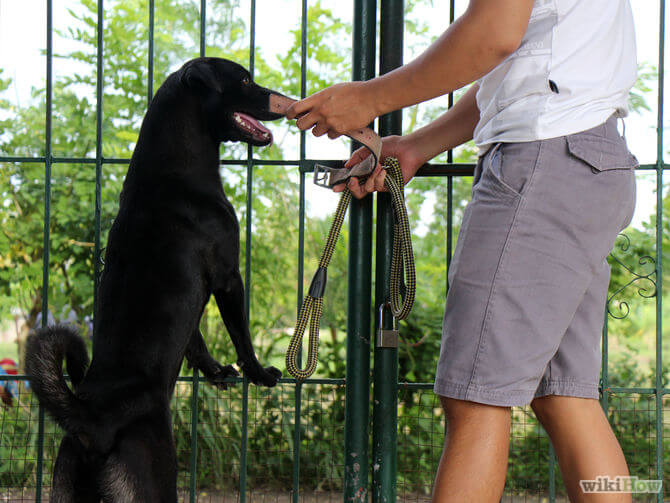
Pick up your dog's leash.
A. Mega excited and head to the door.
B. Perk up but only moves when you move towards the door.
C. Why are you taking my leash??
The Towel
You will need a small towel and a stopwatch for this. Put the towel over your dog's head and start the stopwatch to see how long it takes for your dog to get it off. Please take note not to suffocate your dog with the towel.
A. Get it off within a few seconds
B. Between 15 to 20 seconds
C. Longer than 20 seconds
The Towel and The Treat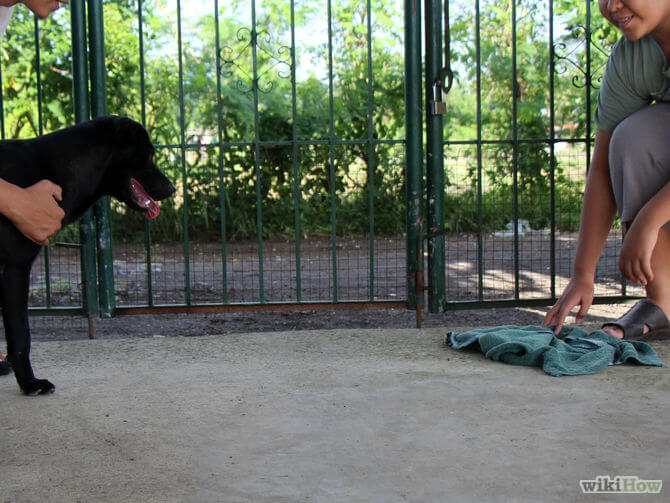
You can have someone to hold your dog while you hide the treat under the towel. If you are alone, exercise the basic "Stay" command! Cover the treat with the towel entirely but do not make it too hard to get the treat out. Release the dog (or command it to come) and see if your dog remembers that the treat is under the towel.
A. Aim for the treat immediately!
B. Slightly slower in movement but still went for the treat, albeit with less enthusiasm.
C. Look at you with a questioning look. What is happening?
Scoring
2 points for each of the (A) response
1 point for each of the (B) response, and uh..
0 point for each of the (C) response.
A score of 6 - 8 means a genius dog!
A score of 3 - 5 means an average intelligence dog.
A score of 0 - 2 means your dog loves you. It will follow you everywhere you go.
25 DOG IQ TESTS by MICHELE WELTON
DOG INTELLIGENCE TESTS
By Stanley Coren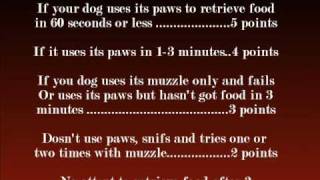
WATCH VIDEO
Test Rules:
Use your own dog, at least one year old, and living with you for at least 3 months
The tests should be like a game for your dog
You must remain calm, don't raise your voice, act disgusted / over excited
You can only do the tests once or twice for scoring purposes
The tests can be given separately and in any order. Because they are mostly based on food reward it may be better to give them over a number of sessions so the dog doesn't end up full of food and tired, both of which will affect it's motivation and performance, and it's IQ score.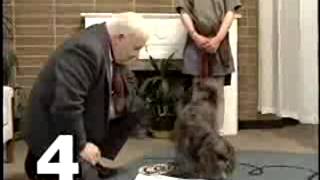
WATCH VIDEO
Test 1 - Problem Solving
Place treat under soup can.
Scoring:
5 Dog gets treat in 0-5 seconds
4 Dog gets treat in 5-15 seconds
3 Dog gets treat in 16-30 seconds
2 Dog gets treat in 31-60 seconds
1 Dog tries to get treat and fails
0 Dog shows no interest
Test 2 - Problem Solving
Quickly throw a large towel over the dog's head and shoulders.
Scoring:
5 Dog gets free in 0-15 seconds
4 Dog gets free in 16-30 seconds
3 Dog gets free in 31-60 seconds
2 Dog gets free in 1-2 minutes
1 Dog doesn't get free within 2 minutes
Test 3 - Problem Solving
Place treat under a small towel.
Scoring:
5 Dog gets treat in 0-15 seconds
4 Dog gets treat in 16-30 seconds
3 Dog gets treat in 31-60 seconds
2 Dog gets treat in 1-2 minutes
1 Dog tries to get treat and fails
0 Dog shows no interest
Test 4 - Short Term Memory
Let the dog see you place a biscuit in the corner of the ring, then turn him loose.
Scoring:
5 Dog goes straight to the treat
4 Dog searches systematically and finds the treat
3 Dog searches randomly but finds treat in under 45 seconds
2 Dog searches but fails to find treat
1 Dog shows no interest
Test 5 - Long Term Memory
Let the dog see you place a biscuit in the corner of the ring (a different corner than the one in the test 4), remove him for 5 minutes, play with him, return, and then turn him loose.
Scoring:
5 Dog goes straight to treat
4 Dog goes to the corner from test 4, then the correct corner
3 Dog searches systematically and finds treat
2 Dog searches randomly but finds treat in under 45 seconds
1 Dog searches but fails to find treat
0 Dog shows no interest
Test 6 - Problem Solving & Manipulation
Place treat under a low platform (too low and far enough back to reach with mouth).
Scoring:
5 Dog gets treat in under 1 minute
4 Dog gets treat in 1-3 minutes
3 Dog uses paws and muzzle but fails to get treat
2 Dog uses muzzle only a few times and gives up
1 Dog doesn't try to get treat
Test 8 - Language Comprehension
Leave dog as if for a recall and in your usual voice, call "Refrigerator".
Scoring:
3 Dog comes
Call "Movies"
2 Dog comes
Call " (dogs name), Come"
5 Dog comes
Call " (dogs name), Come" again
4 Dog comes
1 Dog fails to come
Test 9 - Problem Solving
Dog is shown a treat through a slit in a large cardboard barricade. Dog should not be able to get treat through the slit. Handler encourages dog to get treat.
Scoring:
5 Dog goes around barrier in 0-15 seconds
4 Dog goes around barrier in 16-30 seconds
3 Dog goes around barrier in 31-60 seconds
Handler stops encouraging dog after 1 minute
2 Dog goes around barrier in 1-2 minutes
1 Dog tries to reach through slit and gives up
0 Dog shows no interest
Interpretation:
36 - 40 = Genius!!!!!
32 - 35 = Highly Intelligent!!!!
28 - 31 = High Average!!!!!!!
20 - 27 = Average!!!!!!!
16 - 19 = Low Average!!!!!
12 - 15 = Borderline!!!!!!!
0 - 11 = Deficient!!!
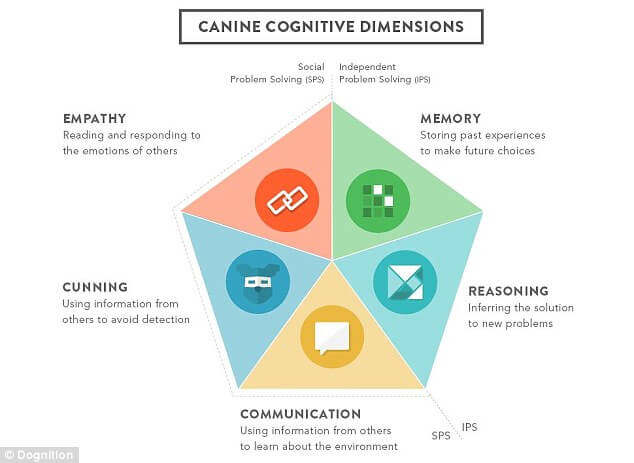
Don't take this I.Q. scale too seriously. A dog's performance on these tests will no doubt be affected by many traits other than "intelligence", such as confidence, greed, activity level, and previous experiences. It should be interesting, however, to see how different dogs react to these challenges. Maybe it will help you to understand your dog a little better!
DOG IQ TEST BOOKS
BUY "The Intelligence of Dogs (Stanley Coren)" BOOK at WWW.AMAZON.COM
BUY "The Dog I.Q. Test" BOOK at WWW.AMAZON.COM
BUY "How Clever is Canine?" BOOK at WWW.AMAZON.COM
BUY "How Smart is Your Dog?" BOOK at WWW.AMAZON.COM

With their outstanding memory (which some say is better than our own), dogs can be trained to suppress even the strongest of natural instincts. But they can also reason and think for themselves as seen most dramatically when they save lives, determining in an instant the best response to a crisis. Acutely sensitive to changes in their environment, including not only those in the atmosphere, but in our own expression and moods as well, dogs have earned a reputation for telepathic thought. Although many questions remain about the possibility of a sixth sense in dogs, what we do know about their other five senses, and their ability to think, that they are remarkable.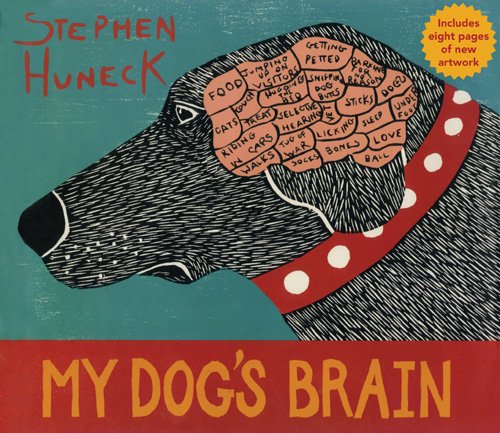
Intelligence is often defined as an ability to comprehend meaning and a capacity to understand. This is directly related to an animal's cognitive power, its ability to perceive and interpret the signals it receives from the environment. In this respect, the dog is very well equipped. The dog's brain is a complex and extremely active organ which demands over 20% of the animal's blood supply. Like our brain, it has three major parts: the cerebrum, which controls learning, emotions and behavior - the cerebellum controlling muscles; and the stem connecting the brain to the rest of the body's nervous system.
Perhaps the most important point for humans to remember about the dog's brain is that its functionality and even its size can be increased through greater sensory stimulation, more interaction with animals and other people, more games or toys to play with, new changes of scene to explore. All of these will stimulate the dog's brain and make it more efficient and powerful. Of all the dog's senses which it uses to great effect in understanding its environment, the most important is its sense of smell. A dog can literally "read" its environment with its nose. Though different breeds have different levels of ability, dogs are generally so much better than we are that its even impossible to fathom.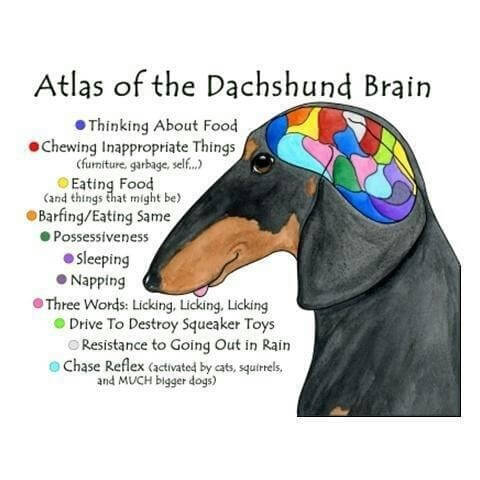
Some people believe that pedigrees are generally cleverer because they are more refined or because intelligence can be enhanced through breeding. But many others believe that mongrels are brighter, inheriting certain "street-smarts" that purebred dogs do not have access to. In fact, a dog's intelligence is more profoundly affected by its training and by its contact with people than it is by its instinctive knowledge. "Whilst a mongrel is just as friendly, intelligent and delightful canine as a dog with a pedigree, it has no advantages over its pedigreed brother. Intelligence is matter of individuality and of association with humankind (Edward C. Ash)."
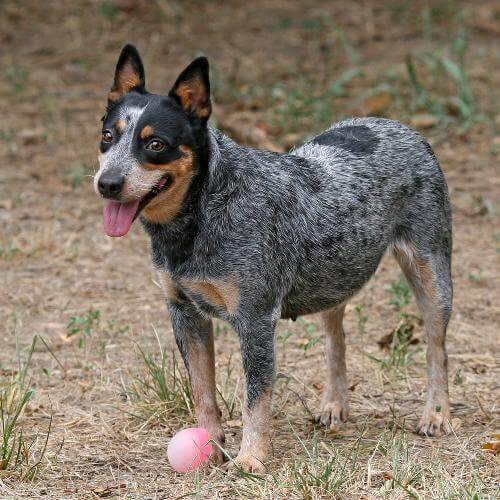
Skidboot was the working ranch dog of David and Barbara Hartwig. Skidboot's story began on Christmas Eve 1992 when David Hartwig was shoeing horses for a nearby ranch. The ranch owner gave the dog to David as a last minute Christmas present for his wife. Halfway home David decided to have a look at the litter again and he took Skidboot home. Skidboot was named after a cover that prevents horses' hooves from sliding. Skidboot is believed to be at least part Queensland Blue Heeler.
WATCH SKIDBOOT VIDEO !
Skidboot was trained by David to do many difficult and intricate tricks. He was a trully amazing dog. Skidboot eventually became famous. He is best known for winning the $25,000.00 championship on Animal Planet TV network's Pet Star competition in 2003. That title led to other appearances on the Oprah Winfrey, David Letterman and Jay Leno TV shows. Skidboot originally started out playing at the State Fair of Texas and later went on to show biz stardom. He made appearances all over the nation as he rose to fame. He was also a frequent visitor to local schools.
WATCH SKIDBOOT VIDEO !
Skidboot's health had been in decline for several years after he was kicked in the head by a horse and blinded in one eye. On Sunday morning March 25, Barbara Hartwig said, Skidboot was unable to raise his head and she and David made the decision to have him euthanized. He was buried under an oak tree on the Quinlan, Texas ranch of his owners. David and Barbara said they do not intend to replace Skidboot as a personal pet. They said that there is only one Skidboot. May you rest in peace and may David and Barbara take comfort in the memories that you left behind.

Until recently, dogs were believed to be intellectually inferior to wolves. For example, a 1985 study conducted at the University of Michigan at Flint demonstrated that wolves were typically able unlock a complicated gate mechanism after watching a human do it a just a single time, yet domestic dogs were unable to complete the task even after watching it being opened several times. These results led to the conclusion that dogs' were less intelligent than wolves.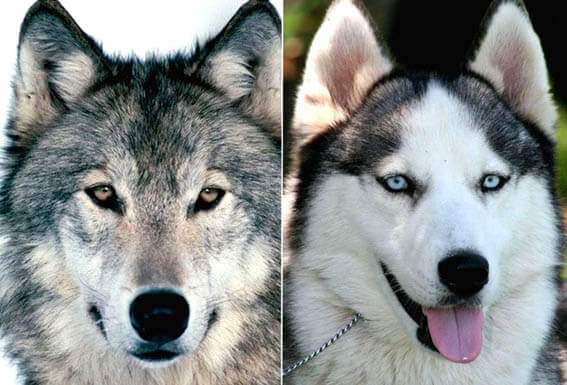
WATCH VIDEO
Dogs are pretty smart. They can have huge vocabularies, they can infer meaning in the growls of other dogs, and they can effortlessly figure out if other dogs want to play or fight with them. But their intelligence might be limited to the social domain. Indeed, while they outperform chimpanzees in social tasks, chimpanzees outperform them in many other tasks. And they might have developed their impressive social skills as merely an accident of natural and artificial selection. Previous research has shown that dogs can use lots of different forms of human communicative signals to find food, and they can also inform humans of the location of hidden food, by looking back and forth between that human and a second location. But what is it about dogs that allows them to comprehend and invoke human social communication?
One of the classic experiments that shows the cognitive difference between wolves and dogs is the pointing task: Whereas a dog even a 3-month-old puppy will readily follow the direction a person points in, wolves just don't get it. That contrast has been cited as evidence that dogs may have gained social intelligence not present in wolves. When they were subjected to these test, domestic dogs, exhibited great skills at following human directional and informational cues.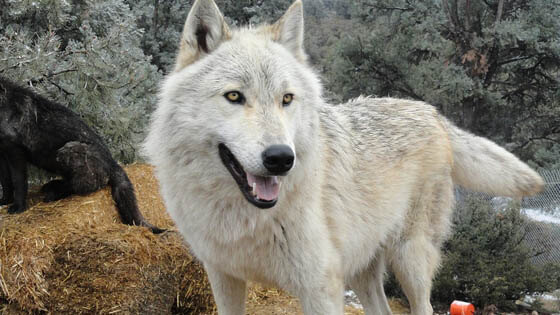
Even stray dogs nearly always solved the problem immediately. The dogs consistently outperformed wolves. Though, wolves' has a much larger head in comparison to their body size and other canids. Whether dogs head vary, coyote and jackal have almost similar head and foxes are having a comparatively smaller head. One experiment carried out with a wolf and a dog, both of same age and same trainer. The trainer kept two upturned bowls in front of the dog, one out of which had a snack. She then pointed snack bowl and the dog went to fetch the reward from the upturned bowl.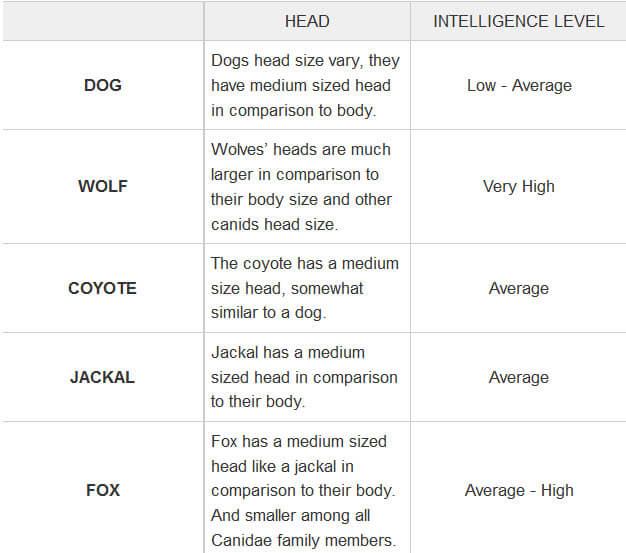
She did the same with the wolf and the wolf got his snack from the bowl she pointed to. Next time with the dog, she pointed to the wrong bowl which he went to look under. And the dog was deceived having trusted the human for centuries now. It went to the wrong bowl only because its trainer pointed at it. The wolf however, relied on his senses than what the trainer told him. Despite her pointing at the wrong bowl, he went straight to the one with the snack. This shows how the mental development and thinking differs. lso Wolves are the most intelligent count among family.
WHO IS SMARTER - DOG or WOLF?
(watch video !)
WOLF vs DOG LOGIC
Wolves do better on some tests of logic than dogs, a new study found, revealing differences between the animals that scientists suspect result from dogs' domestication. In experiments, dogs followed human cues to perform certain tasks despite evidence they could see suggesting a different strategy would be smarter, while wolves made the more logical choice based on their observations. In fact, dogs' responses were similar to human infants, who also prioritize following the example of adult humans. During the tests, a researcher would repeatedly place an object in Box A and allow the subjects to find it. When the experimenter then switched and put the object in Box B, human babies and dogs were confused and continued to search for it in the first box. Wolves, however, easily followed the evidence of their eyes and located the object in Box B. The finding could help scientists learn more about the evolution of social behavior, not just in dogs but in humans as well.
HUMAN CUES
The differences reflect an emphasis on different learning styles. The researchers think the differences between the dog and wolf subjects, both of which had been raised in human captivity in these experiments - arises from genetic traits that have been bred into dogs over 10,000 years of domestication by humans. Wolves and dogs diverged from a common ancestor at least 15,000 years ago, scientists think. Other experiments have noted that dogs are more attentive to the human voice and subtle vocal changes than wolves another trait that likely results from domestication.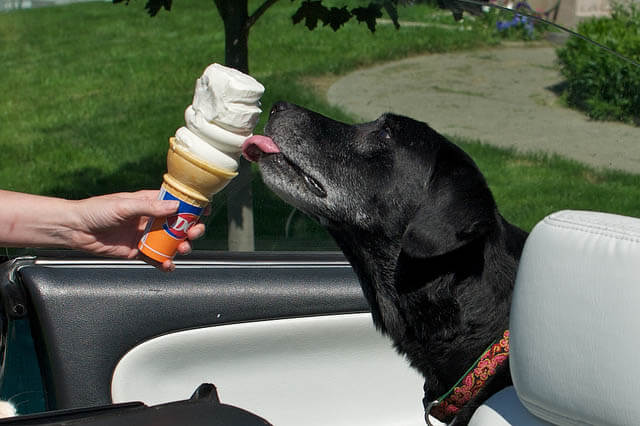
DOG - HUMAN CONNECTIONS
In some ways, domesticated animals resemble human infants because both learn primarily by following and listening to adult humans, rather than judging all new situations for themselves. Children are programmed to learn from their elders when it comes to crossing the street and other dangerous situations in which following their own curiosity and instincts are not the best learning mechanisms. It is similar for domesticated dogs, which are bred to be able to follow human cues when it comes to situations like not eating food off the table, rather than following their own instincts to go for the chicken. This ability makes dogs easier to train - a key requirement for a domesticated species. Even though the wolves used in the experiment were raised in captivity, their parents or their parents' parents were wild, so the test wolves are not domesticated creatures with traits hard-wired into their genes over thousands of generations.
SOCIAL EVOLUTION
The point of the research is not just to learn about the domestication of dogs, but to use dogs and wolves as a test case for studying how social behavior can evolve, and especially how it may have evolved in humans. By studying how dogs learned to socialize with humans, scientists hope to understand more about how humans came to socialize with humans. Interestingly, dogs and babies did react differently to one aspect of the experiment: When the human researcher was replaced by a new person, dogs forgot their lesson about Box A and followed their eyes instead.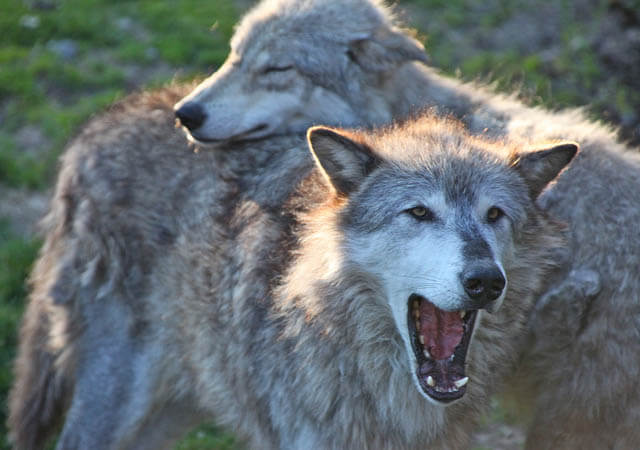
Infants, however, responded the same with multiple human teachers, continuing to trust the human over the visual evidence. The researchers suggest that babies are programmed to take instruction equally from all adults and integrate it with their general understanding of the larger world. For dogs, it seems the relationship with the individual human is important, and teachings don't easily generalize to all situations. To test how well dogs and wolves could learn from one another, the researchers created a problem that wolves and dogs were equally motivated to solve: a food treat locked inside a box.
The only way to open the box was with a lever. They trained one dog to operate the lever with its mouth, and another dog to use its paw. The wolves were raised with the dogs and treated them as members of the same pack. Then they let wolves and dogs see the box opened by one of those two methods. If dogs have better social intelligence across the board, they should do better than the wolves at learning by example and getting at the treat. The jury is still out on whether dogs have lost a mental ability

Smart Dogs Deserve Toys that Make 'Em Think!
If your dog is tired of the same old ball and stick then it's probably time for a challenge. Luckily, there are lots of fun dog puzzles and games available that make your pooch use his brainpower. The incentive? Treats of course! Yep, all these dog toys may be different but they all have one thing in common: they all make your dog work in order to find and get at the treats hidden inside.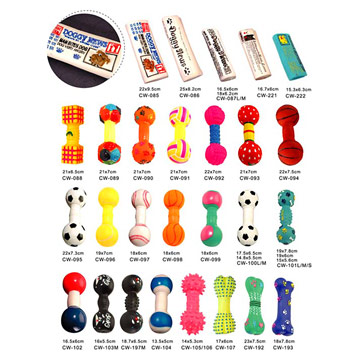
What's especially nice about dog puzzles and games is that they're so engaging. Dogs play with them longer than with average dog toys because not only is it fun, but the reward incentive is constantly there.
DIY DOG IQ GAME
IQ games are being sold in pet stores and can be purchased quite easily. But just in case your dog is not a fan of IQ games, why not try out a DIY one before committing your money into one?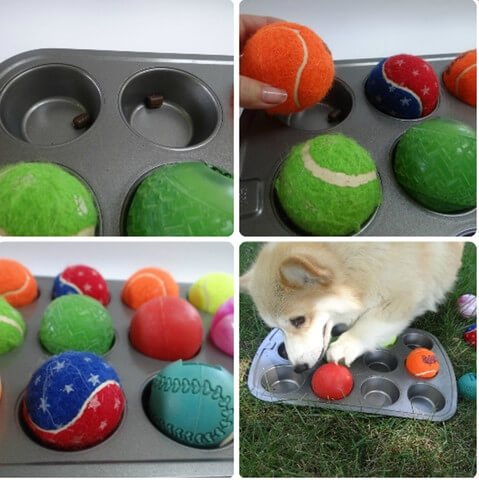
Items required:
Muffin tray
Balls (tennis ball, or whichever fits the muffin tray)
Treats
1. Scattered some treats into the muffin tray.
2. Place a tennis ball the muffin tray. The tray must not be too big otherwise it will be hard for them to get the ball out. Your dog will need to remove the tennis ball in order to enjoy the treats.
Nina Ottosson Dog Magic
The perfect beginner puzzle for your dog to start with
To play with the Nina Ottosson Dog Magic dog puzzle, simply hide dog treats underneath the bones and your dog must figure out how move the bones with his / her nose or paws, in order to win the game. 15 of the best dog puzzle toys to keep your dog entertain and mentally stimulated. With dog puzzle toys, your pooch can regularly use his natural instinct to hunt and forage for food. All of the dog puzzle toys that we feature here are also slow feeders. So they can help stop your dog from over eating. And finally they also make your dog take time to eat. These puzzle toys are great for keeping your dog happy and healthy. During our research we found the puzzle toys with the best reviews and unique designs. We have compiled this list for you.
WATCH VIDEO
Nina Ottosson Dog Fighter
A great mid-level challenging puzzle for dogs. With the Nina Ottosson Dog Fighter dog game, dog treats are placed underneath the wooden pegs which your dog must slide through a channel in order to find and eat the treats. The Dog Fighter can also be made more challenging with the addition of two larger pegs used to block the channels.
WATCH VIDEO
Buster Cubes
Buster Cubes are plastic cubes (coming in small and large sizes) containing a number of internal chambers which hold kibble. The Buster Cube's level of difficulty can be adjusted according to the individual dog's proficiency. Buster Cubes can be very loud when rolling around on hardwood floors, and are somewhat less easy to clean than Kongs and TaJs.
Nina Ottosson Dog Turbo
One of the most challenging dog puzzle games
Nina Ottosson Dog Turbo
Dog treats are placed inside the passages and then your dog needs to move the pegs toward the outside of the Nina Ottosson Dog Turbo dog puzzle. It's a challenge, but once he does he'll earn a windfall of yummy treats!
WATCH VIDEO
Linkables
Adding more pieces increases the challenge
Linkables
Busy Buddy Linkables dog treat toys come in three shapes: Twist, Elbow and Orb. They can be used alone or with other Linkables. Of course, the more pieces you add, the more difficult it is for your dog to get the treats out. Just put treats inside the Linkables and your dog must shake, roll and move the pieces around for the treats to come out through the holes.
Aikiou Interactive Dog Food Bowl
Helps dogs eat their food more slowly
Aikiou Interactive Dog Food Bowl
Just fill up the Aikiou Bowl's different compartments with your dog's favorite food or treats (it can hold up to 3.5 cups worth) and then watch as your dog has fun figuring out how to open the doors and turn the wheel in order to get his / her food.
WATCH VIDEO
Tug-A-Jug
Unique design lets dogs see, smell, & hear the treats as they roll around in the toy.
Tug-A-Jug
You can fill Tug-A-Jug with either kibble or treats.
Dogs must roll the dog toy around or tug at the rope in order to release the treats.
Dog Pyramid
Unique weighted design always puts it back in the upright position
Dog Pyramid
After you fill the Nina Ottosson Dog Pyramid with treats your dog needs to roll, spin, knock and move it around to get the treats out. What makes it really fun is that it wobbles and bops unpredictably and dogs go crazy trying to get it to stay put.
WATCH VIDEO
Twist 'N Treat
Easy to adjust the difficulty level for dogs
Twist 'N Treat
The unique design of the Twist 'N Treat dog toy lets dogs easily smell the treats that are waiting inside. However, it's not that easy - there's only one hole for the treats to come out, but you can decide how large or small you want the treat opening to be for your dog.
Dog Memory Game
Dogs need to remember under which colored bone you hid the treat
Dog Memory Game
First hide a treat under one of the colored puzzle pieces while your dog is watching. Then let your dog try to pick the correct puzzle piece by indicating with his nose or paw. The Nina Ottosson Dog Memory game can be made even more challenging by covering up the puzzle (or spinning it a few times) after your dog watches where you put the treat, and then uncovering it to see if he / she can remember where the treat is.
Kyjen Paw Flapper
Eight Hidden Dog Treat Chambers Make For One Challenging Dog Puzzle
Kyjen Paw Flapper
What's fun about the Paw Flapper dog gameis that there are lots of scent holes on the top so that your dog won't forget that there's tasty dog treats waiting inside to be found!
TOP SMART PUZZLE DOG TOYS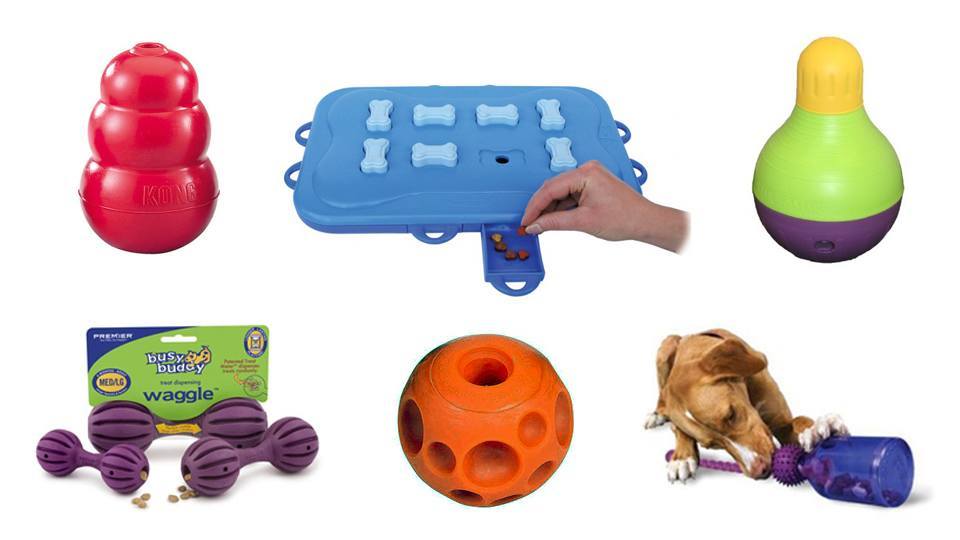
This list of dog puzzle toys will hopefully help you decide what options are the best for your dog. There are options for beginners and others up to advanced puzzle boards and toys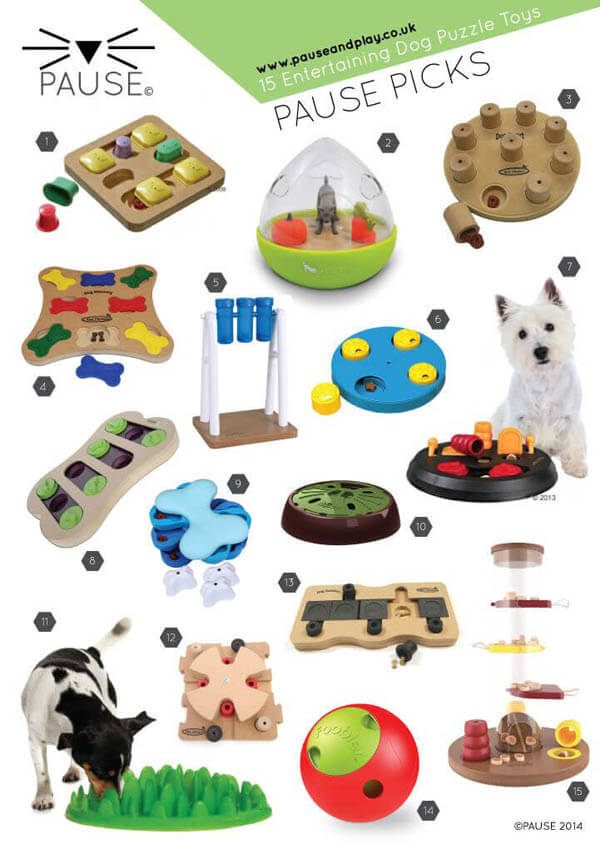
1. Doggy Brain Train Quadro Dog Toy
Think, play, learn, reward! Doggy Brain Train Quadro is a fascinating game for dogs which will keep you and your four legged friend amused for hours. The strong, high quality wooden playing board has little plastic covers and plugs with integrated air holes, making them easy to clean.
2. P.L.A.Y. Wobble Ball Toy
Your pup loves to play, and there is nothing more exciting than when food is part of the equation! The P.L.A.Y. Wobble Ball Toy will provide hours of interactive fun and enrichment for your dog. Simply put a treat in and reward your dog for their persistence and intelligence!
3. DogSmart wood - Level 1 by Nina Ottosson


Fido's expressive face, including those longing puppy dog eyes, may lead owners to wonder what exactly is going on in that doggy's head. Scientists decided to find out, using brain scans to explore the minds of our canine friends.
WATCH VIDEO
Emory University researchers have developed a new methodology to scan the brains of alert dogs and explore the minds of the oldest domesticated species. The technique uses harmless functional Magnetic Resonance Imaging (fMRI), the same tool that is unlocking secrets of the human brain.
The Public Library of Science (PLoS ONE) is publishing on May 11 the results of their first experiment, showing how the brains of dogs reacted to hand signals given by their owners.

The dog brain experiment
"A hand signal was given that indicated the presence or absence of a food reward that would be received. The left hand up indicated a hot dog reward, while both hands pointing toward each other horizontally indicated no reward. The hand signals were chosen to be easily distinguishable and were maintained for approximately 10s"
Of course there were training methods to keep the dogs heads very still during the scans. And also calibration of the machines to ensure scan noise was kept to a minimum.
For Callie, there were 19 reward trials and 20 no-reward, for McKenzie, 16 reward and 11 no-reward trials
To prevent harm to the dogs they were trained to wear ear muffs and head wraps that reduced the effects of the scanner noise to acceptable levels. They were completely unrestrained and able to leave the machine at any time.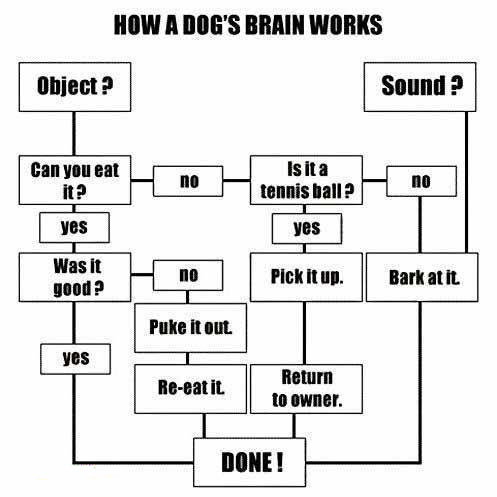
"When we saw those first brain images, it was unlike anything else," said lead researcher Gregory Berns in a video interview posted online. "Nobody, as far as I know, had ever captured images of a dog's brain that wasn't sedated. This was a fully awake, unrestrained dog, here we have a picture for the first time ever of her brain," added Berns, who is director of the Emory University Center for Neuropolicy. He added, "Now we can really begin to understand what dogs are thinking. We hope this opens a whole new door into canine cognition, social cognition of other species."
The right caudate region was found to 'fire' in both dogs under reward hand signals and a NO reward signal resulted in inactivity in this section of the brain.
Sit...stay..still
Berns realized dogs could be trained to sit still in a brain-scanning machine after hearing that a U.S. Navy dog had been a member of the SEAL team that killed Osama bin Laden. "I realized that if dogs can be trained to jump out of helicopters and airplanes, we could certainly train them to go into an fMRI to see what they're thinking," Berns said.
So he and his colleagues trained two dogs to walk into and stay completely still inside a functional magnetic resonance imaging (fMRI) scanner that looks like a tube: Callie, a 2-year-old feist, or southern squirrel-hunting dog; and McKenzie, a 3 year old border collie.
The dogs were trained to wear earmuffs, to protect them from the noise of the scanner. They were also taught to hold their heads perfectly still on a chin rest during the scanning process, to prevent blurring of the images.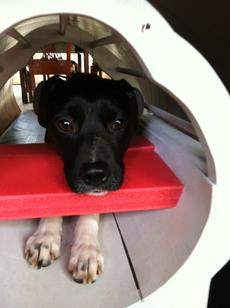
"We know the dogs are happy by their body language," says Mark Spivak, the professional trainer involved in the project. Callie, in particular, seems to revel in the attention of breaking new ground in science.
"She enters the scanner on her own, without a command, sometimes when it's not her turn," Spivak says. "She's eager to participate."
Of course, standing inside an FMRI machine isn't exactly a normal canine experience, and Berns' team needed eight months to train his dogs, a 2-year-old feist named Callie and a 3-year-old border collie named McKenzie, to remain motionless inside the machine while wearing noise-reducing earmuffs.
In the experiment, the dogs were trained to respond to hand signals, with the left hand pointing down signaling the dog would receive a hot-dog treat and the other gesture (both hands pointing toward each other horizontally) meaning "no treat." When the dogs saw the treat signal, the caudate region of the brain showed activity, a region associated with rewards in humans. That same area didn't rev up when dogs saw the no-treat signal.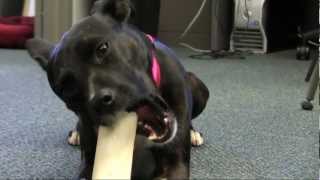
"These results indicate that dogs pay very close attention to human signals," Berns said. "And these signals may have a direct line to the dog's reward system."
Mirror into human mind
The researchers think the findings open the door for further studies of canine cognition that could answer questions about humans' deep connection with dogs, including how dogs represent human facial expressions in their minds and how they process human language.
With such an evolutionary history between man and man's best friend, the studies, the researchers point out, "may provide a unique mirror into the human mind," they write.
"The dog's brain represents something special about how humans and animals came together. It's possible that dogs have even affected human evolution," Berns said.
Dog empathy, and how it compares to the human version, is another possible area of investigation.
In fact, research published in the August 2010 issue of the journal Current Anthropology suggests our love of these furry four-legged creatures may have deep roots in human evolution, even shaping how our ancestors developed language and other tools of civilization.

Albert Einstein once said, "if you judge a fish by its ability to climb a tree, it will live its whole life believing that it is stupid." When it comes to the discussion about dogs and their intelligence, this notion speaks volumes: dogs are bred to be good at certain things. For hunting dogs, this means they use their noses to track animals over miles and can even be taught how to not damage the kill in its mouth. Medical alert dogs can be trained to sense a seizure before it happens and to even retrieve medication for their owner. Guard dogs can be taught how to defend their home from intruders and protect the ones they love. Are any of these dogs smarter than the other? Maybe a better question is, what defines intelligence?
They say an intelligent dog has the mental capacity of a two-year-old human child. On some levels, this is impressive: children of that age know and understand many words and are capable of learning lessons, but can a toddler be taught how to herd a hundred sheep, or how to guide a blind person through a busy city street? Probably not. When it comes to determining the smartest dog breeds, many factors must be taken into consideration, including inherited traits, training, a dog's bond with his owner, and the different types of intelligence measured in our canine companions. This article will also discuss the top ten smartest breeds recognized by a dog behavior expert, dog IQ tests you can perform at home, and finally, whether you should consider getting a highly intelligent dog for your family.
Should I get a smart dog?
Many prospective dog owners consider intelligence when shopping breeds of dogs for their family, some believe that smarter automatically means better, while others are convinced that potty training will be easier for a smart pup vs. a not so smart pooch. If you are in the market for a dog, however, you may want to reconsider getting a highly intelligent dog: dogs that rank high on the IQ scale often rank high on the misbehavior scale as well. A bulldog, for example, may be content to sleep on the couch all day and only begrudgingly goes for his daily walk. A Border Collie, on the other hand, would not fair well being left at home all day with no interaction and minimal exercise. Smart pooches that are not challenged - much like children, will often result to destructive behaviors and even deteriorate mentally if not given ample opportunity to exercise his body and mind.
When you are searching for a forever friend, the most important thing to consider is your family's lifestyle: how much time will you have to devote to Fido? Who will take him on daily walks? Do you have a large yard? If not, where will he get exercise? Also don't forget about the intelligent pup's mind: how will you make sure that his smarts are being put to good use and not mischief? Owners of smart dogs find that doggie puzzles work wonders, while others enroll their pup in a therapy dog course so he can be taken to hospitals and nursing homes to bring joy to the residents and fulfillment to Fido. Others find their dogs excel at agility, tracking, lure coursing, and dock jumping.
Whether you have a pup that is the smartest dog on the block, or have a pooch that is more cute than clever, remember that the most important thing between a dog and his owner is love and care. At the end of the day, it doesn't really matter whether your dog has an IQ like Einstein or Frankenstein, but what really matters is the joy he brings into your life, so be sure to treat him like family no matter what.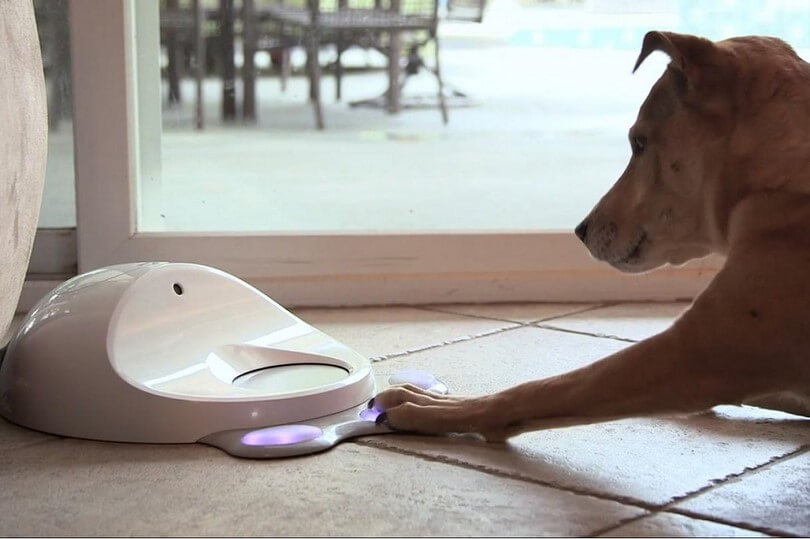
Cultivate a desire to learn
Tell your dog he is clever, smart, a genius. Get him so greedy for praise that he will work hard to learn what you want. You do this by putting your dog in a situation where you know he will perform a behavior on his own, then you ask for that behavior and praise extravagantly when he does it. A natural place to begin this is when you know your dog or puppy has to pee - after sleeping, eating, or being inside his crate. You take him to the right spot and give the command. When he inevitably obeys, you praise him until he is fully excited and pleased with himself. You have now cultivated in your dog the habit obedience and reward. With young animals and horses in particular, you will achieve superior results by asking very little in the beginning so your dog enjoys a high rate of success and minimal correction.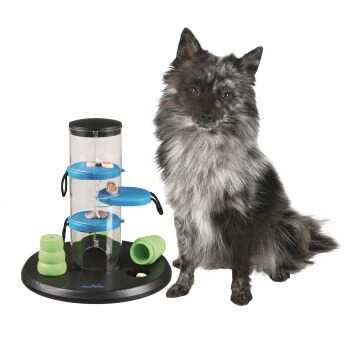
There are other rewards which can strongly motivate a dog. If you require your dog to perform a behavior before an event he strongly desires, he will more actively try to figure out what you want. An example is to have your dog bring you his leash before leaving for a walk or his dish before being fed - teach him to present it properly, sitting before you with the dish in his mouth-heavy dishes dropped on your feet can be rather painful. Make your dog feel needed. When he has learned to fetch, ask him for help when you drop something and cannot reach it easily, then be extremely grateful when he hands it to you. Teach him to put waste paper in the trash and then deliberately toss and miss so he can put it in for you. As always, shower him with gratitude so he will want to do it again.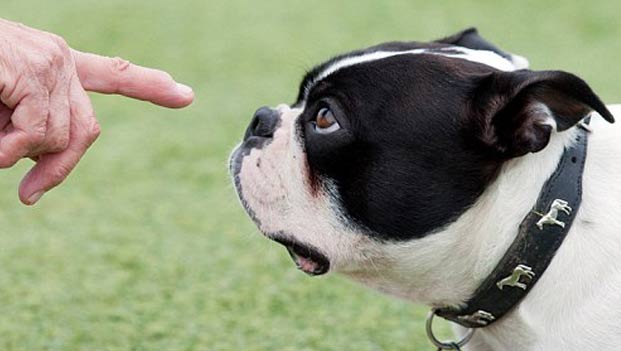
Teach your dog English
or any language you prefer
While dogs cannot speak, they are capable of learning words and understanding and acting upon those words in different contexts. Our border collies average about 20 minutes time to learn a new word and one of them knew over 100 words before he was a year old. We start teaching our dogs from puppyhood, but it is never too late to begin. When you bring home that puppy, even if you considered yourself a sensible individual, it understandable to begin speaking funny words to it in high pitched voices - we are perfectly guilty of prattling. However, this is the ideal time for your dog to begin learning English as a second language and you will be so proud as you watch him develop. With better communication your dog will be able to learn tricks faster, help you around the house or farm, and much more. There are many ways to teach vocabulary. Here are a few tips. You will find increasingly more methods to teach your dog as his vocabulary and your understanding of his thinking grows. 
Use repetition.When you begin to learn a new language, you do so by repeating words and phrases until they become familiar. Announce events and activities to your dog, using the same phrases such as "Let's go outside!", "Do you need to go paper?" or "Are you hungry?". We like to tell our dogs "I'll be back soon." when we leave a room. This allows them to relax and wait instead of anxiously trying to follow. Say "Good morning!" and "Bedtime!" and announce meals.
Name the rooms of your house. Give your rooms names such as: My Room, Auntie's Room, Kitchen, Big Room. Announce the room when you are going to it with your dog. He will soon learn the names and run ahead. You will eventually be able to tell your dog "Take this note to John. He is in the Study".
Name objects. Name toys and any objects you want your dog to handle. Show your dog a toy and say "This is Stinky". You then touch the toy, shake it, encourage him to grab it while saying "Where is stinky?" When he grabs it, you shout "There is Stinky!" If he has learned to fetch, you then tell him "Bring me Stinky." Point at the toy or poke it if necessary to get him to pick it up, then praise him extravagantly. You will probably need to repeat this and any other new word or behavior for a few days before it is solid in his memory. The more object names he learns, the faster he will learn new ones. Eventually, your dog may hand you the remote control or join the the search for lost keys.
Name people. Give everyone in your house a name that your dog can easily recognize: Mummy, Auntie, Grandpa, Uncle George. Teach your dog the names by saying "Go to So-and-so" and have that person immediately call the dog. Make sure So-and-so is attentive or your dog will end up responding to "Call him!" as a command to go to the other person. Learning names is useful because your dog can learn to deliver notes and objects from one person to another and save you from shouting across a big house.
Break up commands into many parts. A command such as "Fetch" can be broken down into "Go get it", "Pick it up", "Bring it", and "Give" or "Drop it". You can then combine these words with others to form new behaviors.
Play hide and seek. Show your dog his favorite toy and then hide it and say "Where is Bunny?" Keep asking "Where is Bunny?" until he finds it. Try it with all his toys one at a time.
Show contrast. To understand a word, your dog also needs to understand what the word doesn't mean. To know what qualifies as "In the trash" he has to know that dropping a paper on the floor next to the trash won't do.
Start from the goal. When teaching a complex behavior, starting at step one may seem logical, but starting at step 10 will accomplish it faster. Make the objective clear immediately. If you want your dog to learn to close a door the objective is the door clicking shut. Start with the door only slightly ajar. When he can close it by pushing one inch, open it a little wider. omplete steps for this trick will be provided in a separate article. Teach him to drop things in the trash while he is standing with his mouth over the basket where he cannot miss then gradually increase the distance.
Tell your dog facts relevant to his daily life. Show your dog objects that are forbidden such as chocolate and tell him it is bad. He will learn to be wary of forbidden things. We also taught our dogs the word "Hot" by touching hot bowls of food ourselves and pulling our hands away yelling "Hot!" Then we let them sniff it closely to feel the heat. They now wait patiently when we tell them their food is still hot and move considerately around us when we say we have hot tea.
Music can make your dog smarter
Music lessons have been proven to improve children's performance in school - it has the same effect on dogs. Learning to recognize songs and melodies is an effortless exercise that improves the memory. Dogs are attracted to the same elements of music that please children so we sing a lot of nursery songs to amuse our boys. Their faces light up when they hear a song they know and they bark along to certain songs. They are also fond of hand motions to act out songs which they memorize and bark along even if we do the motions without singing. Dogs are also capable of recognizing and enjoying classical music both live and recorded. Pat your dog in rhythm to a symphony and he may learn to tap his tail to music. Use songs to announce events regularly. "Happy Birthday!" can be sung as "Happy baff (bath) day to you!", "Here come the bride" can become "Here comes the food".
The lyrics of dog name
You can also change the lyrics for your dog's name to please him. Ludwig is named after Beethoven and he likes to hear his nickname Luvie-Wuvie sung to the tune of Beethoven's 5th symphony or Eccosaise. For Wolfgang, named for Mozart, we changed the military march from the Marriage of Figaro to sing "Wolfie poo on the paper" and Cherubino's aria to have the words:
Good dogs get treat!
Bad dogs get beat!
Good dogs get dinner
Bad dogs get thinner
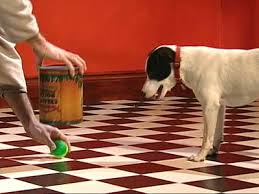
Beyond simply being hairy, smelly love machines, a growing body of research shows that dogs may be even more in tune with us than we previously thought. So, why our relationship with dogs seems so uncomplicated?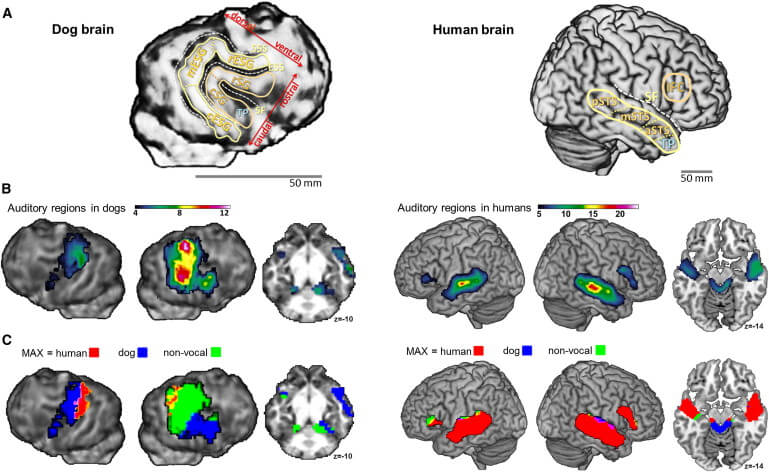
Dogs read our body language
Human babies understand that pointing and gaze direction are indications of what's going in another person's mind. To examine whether this skill is learned or inborn, research has explored these capabilities in our closest evolutionary relatives - chimpanzees and bonobos. The classic test is to hide a treat in one of two locations then point to where it is. Children from just over a year old will have no difficulty recognising this signal and will come and claim it. Chimps do no better than randomly choosing between the two locations, completely ignoring the cue. Given that chimps seem to struggle with this task, it was widely assumed that it couldn't possibly have evolved in other, "lower" animals. Do this experiment with your cat and she will probably gaze uncomprehendingly at your finger for a while.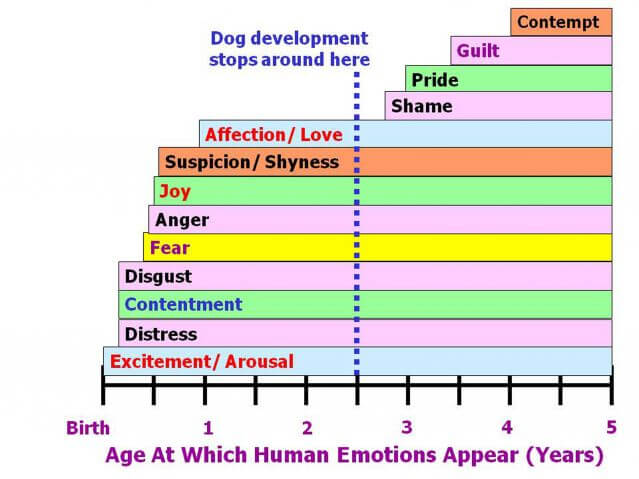
Imagine researchers' great surprise then when it was revealed that dogs, who are miles away from us on the evolutionary tree, passed this task with flying colours. Hide a treat in one of two locations and point at it and dogs will reliably bound over and gobble it up, even when the treats don't smell of anything. Not only that! If you stand a long distance away and point, dogs will unfailingly go to the right location. If you simply bow or nod in that direction, they get it. If you look at one hiding place rather than another, they get it. Perhaps most impressively, if you walk in one direction and point in the other, they still get it.
Dogs know what grabs our attention
Another test of mind reading ability is knowing what someone is paying attention to. Given the option of begging food from two people, one who has seen where the food is hidden and one who has a bucket on his head chimps will randomly go to either one. Dogs, on the other hand, will consistently choose the person who can see. If you have a dog you can try this yourself. Throw a ball and then turn away and the dog will almost invariably come round and drop the ball in front of you, where you can see it. This indicates that dogs are not just playing with their humans, they are also keeping track of what their humans are looking at and how best to get their attention. This sort of gaze reading ability can take months to develop in young children and may never develop in inhuman primates.
Dogs love us
Like cats, dogs also seem to form strong emotional attachments to their owners in much the same way as human babies do to their mothers. The typical test of babies' attachment is to plonk them down in an unfamiliar environment and see how they fare. If babies have a strong emotional attachment to their mothers they will explore the new environment, returning to her regularly for reassurance, get terribly upset if she leaves the room but be quickly consoled when she returns. Dogs show an almost identical pattern of responses with respect to their owners. Sniffing about, returning to the owner, pawing the door and whining when the owner leaves followed by exuberant greetings on their return. Like babies they are distrustful of strangers in the room with them and tend to show signs of increasing distress the longer their owner is away.
Dogs listen to us
Finally there is some evidence that a couple of precocious pooches may have that most quintessential of human skills, comprehending language. Rico, a border collie, has been shown to differentiate at least 200 different labels for objects, an astonishing vocabulary for a canine. Chaser, another collie, understands more than 1,000 different words! Both will bring you the toy you ask for from a huge selection and will do so even if you instruct them out of sight. This means they are not simply picking up on unconscious not verbal signals. If you present these dogs with a familiar toy and a new object, then ask them to fetch the "dax" (a word they won't have heard before), they will reliably bring you the new toy rather than one they already know the name for.
This sort of inference is called "fast-mapping" and is thought to be the skill that underlies human children's astonishing speed of language acquisition in early childhood. But even human children don't show this ability to the same degree as Rico and Chaser until about 2-3 years of age. That dogs are so surprisingly proficient at reading human communication might come as no surprise to dog owners but has been something of a revelation for psychologists interested in how these skills have evolved. What is especially surprising is that they seem much less developed in our closest genetic relatives, inhuman primates for humans and wolves for dogs. So these skills cannot be explained by any simple evolutionary model or by straightforward pack behaviour.
What we are finding is that the rudiments of what we thought of as particularly human social skills may have their roots much further back in evolution than previously expected. Alternatively, they may have evolved in different species independently. What seems increasingly clear is that dogs have maintained the reputation of being "man's best friend" not simply through our own benevolence but also through developing an impressive set of social skills that make them ever-sensitive to our whims and fancies.
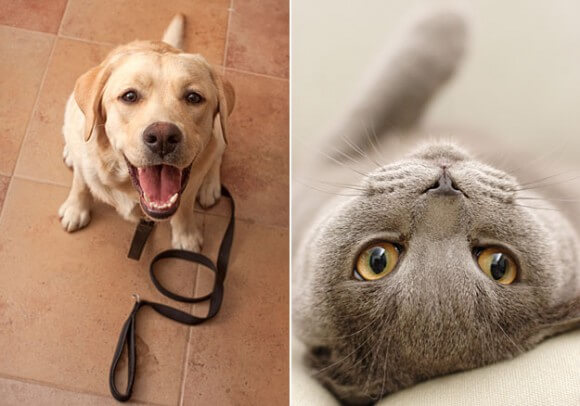
There is perhaps no bigger debate among pet owners than the age-old question of who's smarter - dogs or cats?
You may have your own (strong) opinion, but what does the research say about the intelligence of the two most popular pets in America? Before I get to that, first understand that this is a very difficult topic of investigation because, at its foundation, even the question is problematic. Dogs and cats are two different species, after all, so comparing intelligence between them is not comparing apples to apples. As Psychology Today put it:
"In the case of dogs versus cats, each are specialized to do different things. Dogs are designed to be more efficient runners while cats have better ability at manipulating things with their paws. Thus a test that involved pulling strings or operating levers would tend to favor a cat, while a test involving moving from place to place, where speed is a measure of performance, would favor a dog. Charles Darwin claimed, "intelligence is based on how efficient a species became at doing the things they need to survive and one might argue that by this definition all species that stay healthy, remain numerous and avoid extinction are equally intelligent."
The Encephalization Quotient:
Are Dogs Smarter?
You may have heard the notion that bigger brains are associated with increased intelligence. This is true to a point, but problems arise because bigger animals necessitate larger brains (but this does not necessarily indicate superior intelligence). According to Stanley Coren, Ph.D, the "Encephalization Quotient" (EQ) was developed in the 1970s as a tool to compare intelligence and brain weight in relation to an animal's body size, thereby solving the problems with previous attempts to link brain size to intelligence. Using this tool, it turns out that higher brain mass in relation to body size is associated with increased intelligence. Based on EQ, the smartest animals are (in descending order) humans, great apes, porpoises, elephants and close behind are dogs. Cats come further down on the list (and further down are horses, sheep, mice, rats, and rabbits).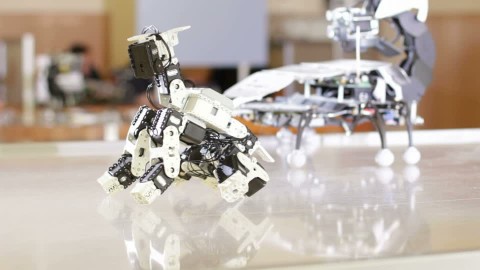
Study: Dogs Are Becoming Smarter Over Time While Cats Stay the Same
Social animals tend to have higher EQs than solitary animals, simply because socializing requires more problem solving, communication and interaction. Dogs are pack animals while cats are not. An interesting point made by Coren, however, is that research suggests dogs are increasing social demands are making them even smarter. Those demands come from their close interactions with humans, which have required them to understand human communications over time… to a much larger extent than cats. Oxford University researchers tested this theory and found, indeed, that based on EQ (using data from fossils to living species) dogs are becoming progressively more intelligent while cats have stayed mostly the same. As Coren explained: "This means that not only are dogs smarter than cats, but the gap between the species is increasing over time. At the risk of starting another argument, these data may explain why we never hear about such things as a "seeing eye cat," "police cat" or "search and rescue cat."
Feline Cognition Is Less Studied
To be fair, dogs are far easier to train and work with than cats, and this holds true for research studies, too. Could it be that cats are just as intelligent as dogs, or more so, but they just don't want to let us in on the secret? Some have argued, for instance, that the number of neurons is a greater indicator of intelligence than brain sizeand in this area cats excel. Cats have 300 million neurons in their cerebral cortex (the brain area associated with processing, problem solving, and perception), while dogs have 160 million.
However, it wasn't easy to get the cats to display their talents. In the case of distinguishing between different quantities. This is an ability that fish also possess, and the researchers said it was far "easier to work with fish than cats." Another interesting distinction, which you can take from what you will, is this: "The research also showed cats and dogs can solve simple puzzles to get food, but when the puzzle is unsolvable, dogs will look to humans for help, whereas cats will keep trying," Live Science reported.
Some other interesting cat versus dog facts to consider:
Cats can be housetrained in an instant as long as they have access to a litter box. There's really no training to it, in fact. It's instinct. Most dogs, on the other hand, take considerably longer to housebreak, and some just never get all the way there.
A dog's memory is only about five minutes long. Kitties can remember up to 16 hours.
Cats seem to remember human kindness and return the favor later. If an owner fulfills her feline's wish to interact, the cat will often comply with the owner's desire for contact at other times.
This research probably won't settle the age-old rivalry between dog and cat owners, but it does come with an Oxford pedigree. Scientists at the prestigious British university say canines are definitively more intelligent than cats. Their reasoning is simple: Dogs are more social animals, so they've developed bigger brains than their feline counterparts. Man's best friend, in addition to always being in a good mood, can recognize images of itself and pick up nonverbal cues.
Finally, if you think the differences between cat and dog intelligence are fascinating, you will be even more interested to know that whether you prefer cats or dogs may tell you something about your intelligence, too.








